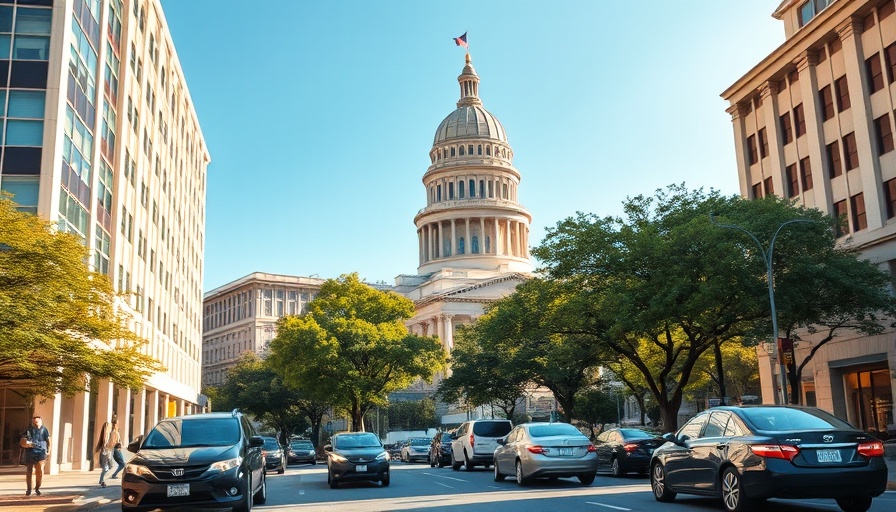
Understanding the Threat Landscape Against Lawmakers
In light of a recent arrest linked to threats against Texas lawmakers, it’s crucial to examine the broader implications of such incidents in today’s political climate. The Texas Department of Public Safety (DPS) confirmed that a suspect was apprehended during a traffic stop in La Grange, Texas, in connection to threats made prior to the scheduled "No Kings" protest at the Texas Capitol. With the situation escalating, the state's lawmakers received a warning about a "credible threat" to their safety, prompting an evacuation of the Capitol. This precautionary measure underscores the increasing concern about the safety of public officials amidst rising political tensions in the U.S.
Political Violence: A Growing Concern
The alarming reality of political violence is more prevalent than many would like to accept. Texas Lt. Governor Dan Patrick highlighted that threats against lawmakers are tragically part of public service today. These threats often stem from individuals expressing extreme views, some of whom may retract their statements when confronted. Yet, Patrick emphasized the fine line that exists between free speech—a fundamental democratic principle—and making threats that can lead to criminal charges. Such distinctions are vital for safeguarding the integrity of discourse in a democratic society.
The Ripple Effects of Violence: A Case Study
The connection to recent violent incidents in Minnesota further illustrates this concerning trend. Joe Biden's administration has consistently condemned political violence, and the recent attack that tragically claimed the lives of Minnesota State Rep. Melissa Hortman and wounded State Sen. John Hoffman serves as a grim reminder that such threats can culminate in tragic consequences. This incident not only highlights the vulnerability of lawmakers but also sparks a discussion about the urgency of protective measures and preventive strategies to ensure public officials can serve safely.
Managing Public Perception and Discourse
The Texas DPS's response highlights the importance of public awareness regarding threats to elected officials. Many citizens may be unaware of the frequency with which lawmakers face intimidation or direct threats, which can discourage open expression of political beliefs. Engaging the public in constructive debates and providing resources to report threats might help mitigate fear and prevent possible violence. Open channels for communication and discussion are crucial in promoting a healthier political environment.
Practical Steps for Legislative Safety
As incidents like these escalate, it is imperative for lawmakers and public officials to adopt enhanced security measures. Increased training for handling threats, developing communication strategies with law enforcement, and fostering community relations can create a safer environment for legislative activities. Local committees might also consider holding community town halls that invite public discourse without fear of retaliation. This could serve not only as a measure for safety but also as a means to bridge gaps between constituents and their representatives.
Looking Ahead: The Future of Political Safety
As we witness growing concern for legislators' safety, it becomes essential to address the root causes of political violence and threats. Addressing mental health issues, promoting civic education, and encouraging respectful dialogue are necessary steps to cultivate a more civil political discourse. In the end, educating the public and fostering an environment that values robust yet respectful political debate may hold the key to reducing such threatening behavior.
In closing, it is evident that while threats to lawmakers are not new, the increasing visibility and severity of these actions call for immediate solutions. Citizens and politicians alike must engage meaningfully with the issue of political violence, fostering a culture of safety and respect in public discourse.
 Add Element
Add Element  Add Row
Add Row 



Write A Comment